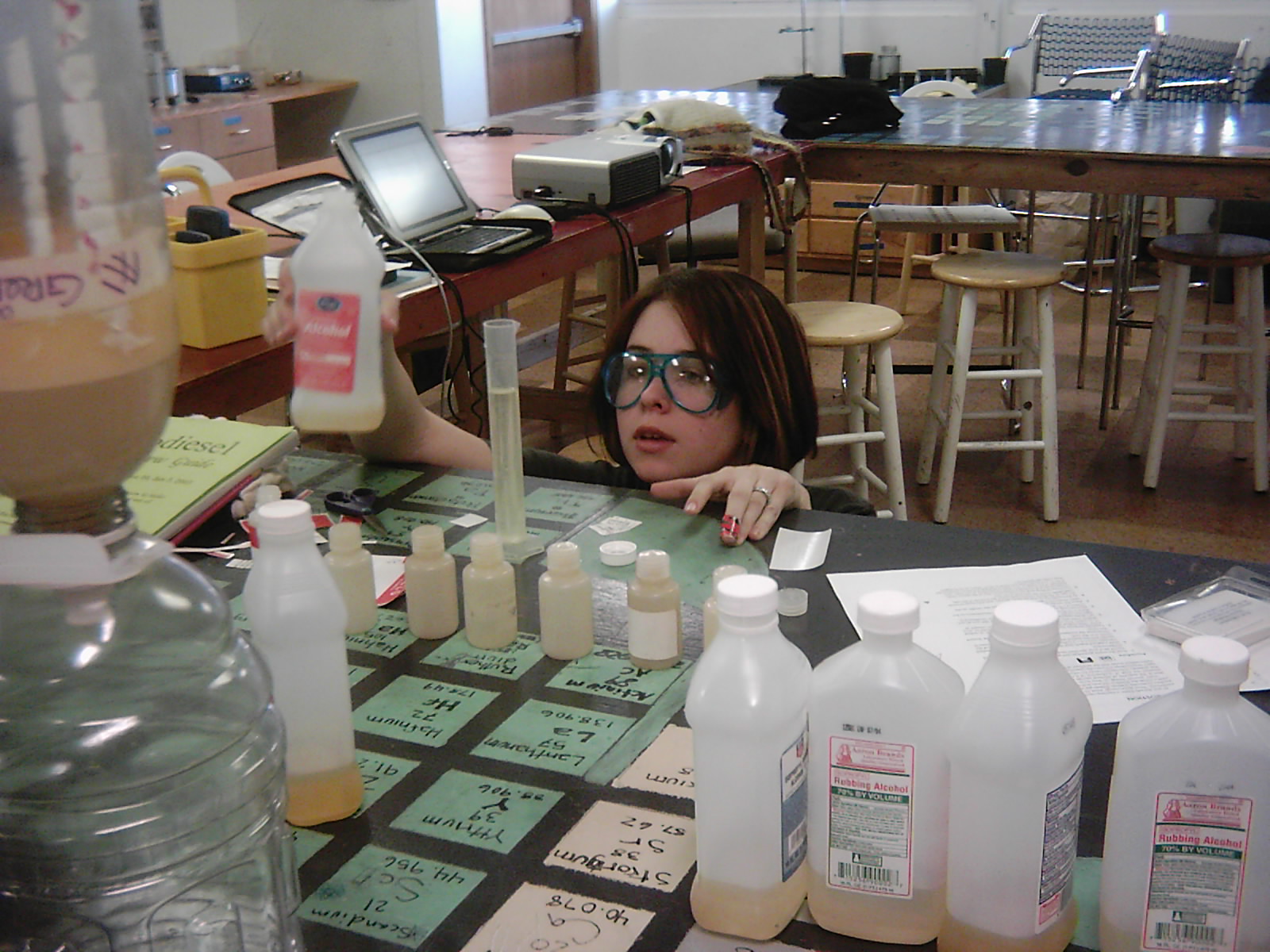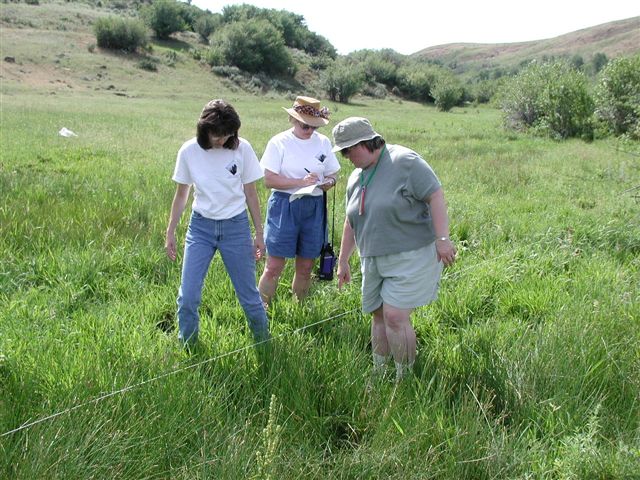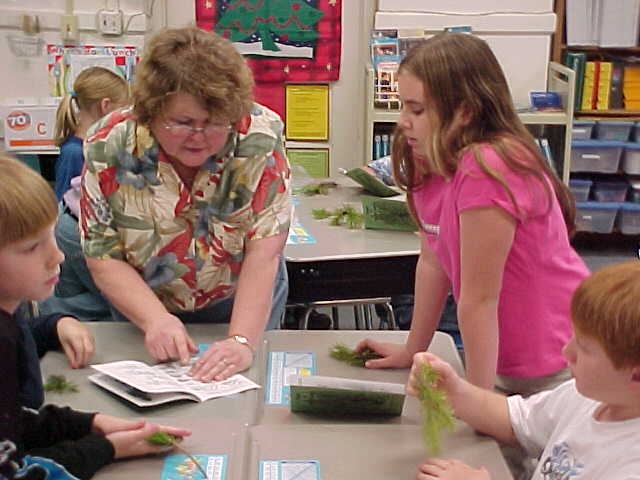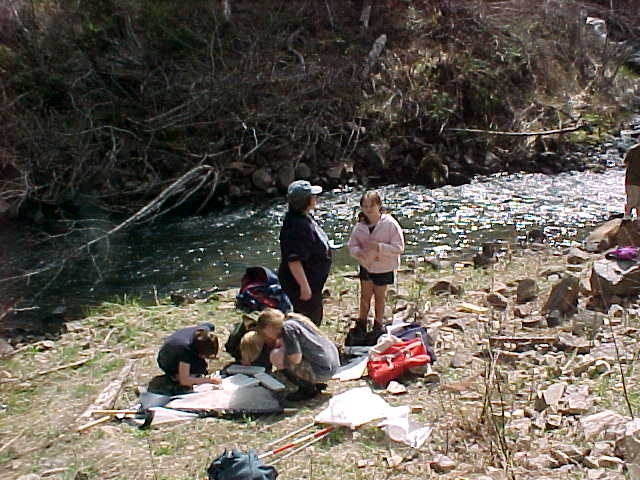 Our school bus ran over 3,000 miles last year on biodiesel—fuel the students made themselves in science class as part of an environmental learning project.
Our school bus ran over 3,000 miles last year on biodiesel—fuel the students made themselves in science class as part of an environmental learning project.
Students started discussing alternative fuels while studying global warming and pollution. That’s when they came up with the idea of making their own biodiesel fuel from used vegetable oil for our school bus to reduce our school’s CO2 emissions. We received a start-up grant from Toshiba, followed by a GreenWorks grant from Project Learning Tree to continue the service-learning project and share it with others.
Fifteen students in the green school committee and more than 30 other students at City Academy in Salt Lake City made over 250 gallons of fuel from used vegetable oil collected from a local restaurant. The school bus shuttled students to the nearby mountain, a green demonstration house, a local recycling facility, on dozens of field trips for various classes, and even to an environmental youth conference in Los Angeles.
Learning by doing
Students were in charge of soliciting used vegetable oil donations, working with the Health Department to adhere to qualifications for oil collection, collecting the oil, making the fuel, filling the bus, and doing outreach and presentations to other groups about biodiesel. They get real, hands-on applications of chemistry and biology concepts. They learned mechanical skills as they maintained the bus and the biodiesel processor. They honed their math skills as they calculate recipes for biodiesel. They also practiced reading, writing, and editing from making and distributing promotional materials.
 Students designed a PowerPoint presentation and a hands-on demonstration that they took to four local schools and four conferences. Sharing their work with others and showing off their accomplishments helped them realize what a unique and powerful project this was.
Students designed a PowerPoint presentation and a hands-on demonstration that they took to four local schools and four conferences. Sharing their work with others and showing off their accomplishments helped them realize what a unique and powerful project this was.
Perhaps the most exciting part of the year was our summer Breakout trip to Los Angeles. We were invited to present at a Green Ambassadors conference where we met some leading scientists and biofuels experts—and got free tickets to the movie premier of the environmental documentary, The Eleventh Hour.
Students became the experts
 Throughout the project, students served as biodiesel experts, not just to their peers but also to other teachers and scientists interested in this alternative fuel. They debated the merits of various alternative fuels, learned the ins and outs of making biodiesel, and, best of all, participated in a project that is making a difference in Salt Lake City’s air quality. Chemistry and environmental science both became more innovative, hands-on subjects to the students who were involved in this project and they gained new skills and knowledge.
Throughout the project, students served as biodiesel experts, not just to their peers but also to other teachers and scientists interested in this alternative fuel. They debated the merits of various alternative fuels, learned the ins and outs of making biodiesel, and, best of all, participated in a project that is making a difference in Salt Lake City’s air quality. Chemistry and environmental science both became more innovative, hands-on subjects to the students who were involved in this project and they gained new skills and knowledge.
The local community has been very helpful and supportive, especially our volunteer mechanics and the Health Department who helped us set up a safe and legal biodiesel lab.
The bus itself was a bit challenging at times (we go through a lot of fuel filters!), but support from the community and funds from GreenWorks helped keep the project going. Air quality is one of Salt Lake City’s biggest environmental concerns and the project proved to be an excellent way to give students a chance to do hands-on science and get them involved in a local environmental issue. It has helped them see that even though there are some big and daunting problems in our world today, they can make a difference.


 Looking back, I realize that my appreciation for the outdoors, the need to learn about nature, and a yearning to take better care of our environment, stems from the way I was raised. My family spent a lot of time outdoors, and we grew up with respect for the world around us.
Looking back, I realize that my appreciation for the outdoors, the need to learn about nature, and a yearning to take better care of our environment, stems from the way I was raised. My family spent a lot of time outdoors, and we grew up with respect for the world around us.  Our elementary school participated in “National Environmental Education Week.” Each day had a different theme—earth, sky, water, and energy—and Friday was “Celebrate Earth Day!” A staff committee put together packets of activities for teachers to choose from to use in their classrooms. Each theme (earth, sky, water, and energy) had multiple PLT activities to choose from.
Our elementary school participated in “National Environmental Education Week.” Each day had a different theme—earth, sky, water, and energy—and Friday was “Celebrate Earth Day!” A staff committee put together packets of activities for teachers to choose from to use in their classrooms. Each theme (earth, sky, water, and energy) had multiple PLT activities to choose from. My dream is to continue sharing knowledge about the environment with both young people and adults through a science school or nature center on our tree farm. Such a venue would provide a perfect location for PLT and other professional development workshops.
My dream is to continue sharing knowledge about the environment with both young people and adults through a science school or nature center on our tree farm. Such a venue would provide a perfect location for PLT and other professional development workshops.